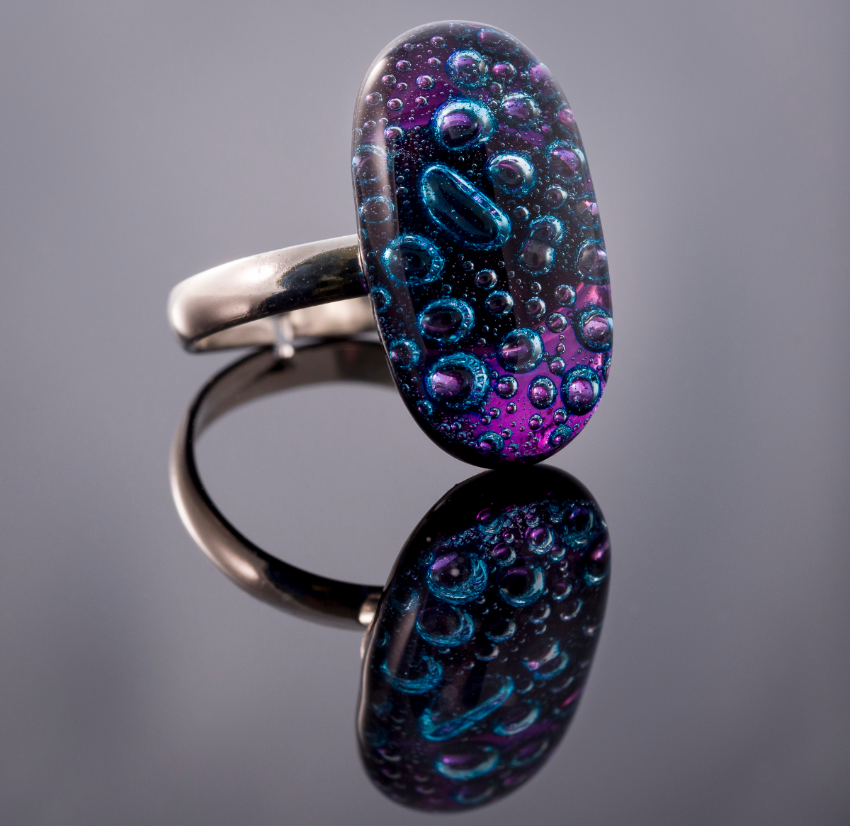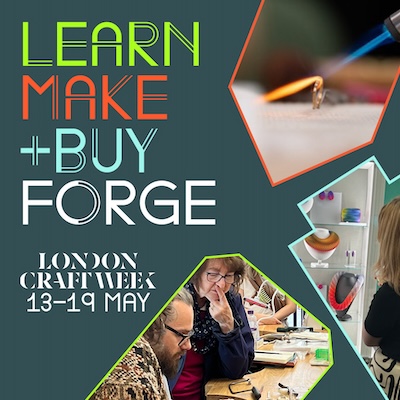Sarah Greening Explains the Chemistry behind her Unique Bubble Jewellery
Scientist-turned-Jewellery Designer wins support of Theo Paphitis & Kew Gardens
Reading Time:
1 min {{readingTime}} mins
After beginning her working life as a lab-scientist, and spending 25 years in the NHS, Sarah Greening now uses her science background to experiment with the chemistry of glass fusing in a kiln to create jewellery where each piece is completely unique, as are the techniques she uses.
In its first year, Sarah's brand, Sarah Greening Glass, was one of the businesses selected for an award by Dragon’s Den Retail Entrepreneur, Theo Paphitis, as part of his initiative which supports small businesses in the UK.
Paphitas meets with Sarah and the other winners annually, providing business advice from both himself and his advisers.
The distinctive ranges include her signature ‘bubbles’ in many colours. From coastal inspired turquoise that harkens to the seafoam inspiration, to more abstract pops of bright pinks and amber. Other styles in sophisticated neutrals are brought to life with a shock of gold mica.

After experimenting with chemicals found in her husband's pottery glazes, Sarah discovered a method of consistently producing bright blue bubbles. Sarah admits there were many attempts that turned out 'not so beautiful, before she produces something wear-worthy. She tells Benchpeg about her method:
"The coloured glass is cut into the desired shape and the chemical mixture is added to the cold glass, which is then capped with a layer of clear glass. This chemical and glass 'sandwich' is then fired in my kiln at just under 800C and the chemical reaction inside the glass gives off gorgeous blue bubbles which are trapped inside the glass 'sandwich'. The bubbles travel upwards through the top clear layer of glass when it is molten in the kiln so when you inspect the (cooled!) glass from the side you can see the bubbles rising up through the glass but they don't break the surface. I use a ceramic kiln which has different temperatures at each level which does affect the outcomes of firing glass which adds an extra layer of complexity and variety!"

Various other techniques are used, some using mica powders which are commonly used with glass, but Sarah has developed her own method of creating interesting shapes with shimmering dusty powders.
Other methods make use of existing chemicals inside the coloured glass, Sarah explains:
"For example - the Turquoise glass has copper inside it and the 'French Vanilla' that I often combine it with, has Sulphur and Selenium in the glass itself. I play with different layering techniques to get the various turquoise/vanilla jewellery pieces - the chemical reaction between the two pieces of glass appears as a brown line which varies in intensity depending on the amount of surface area touching each other. These are popular coastal colours which are stunning to look at and wear but for anyone who is interested in the chemistry - that adds an extra bit of unpredictability and uniqueness to the finished pieces."
Last year, in 2019, Sarah took part in the Spring Fair as a new designer and Top Drawer, with great success, taking many orders from shops and galleries, and notably, a large order from Kew Gardens. This year in April, she will be exhibiting at the British Craft Trade Fair (BCTF) in April 2020.
Author:
Published:









